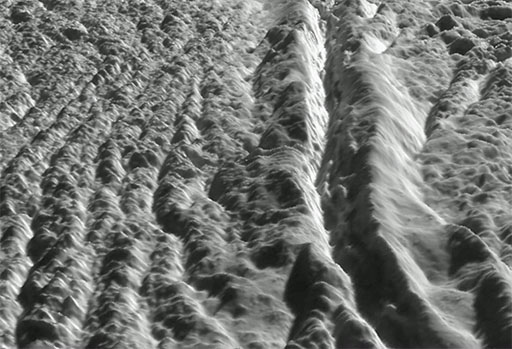1.5 Cryovolcanism on Enceladus
Volcanism does not just occur on rocky bodies like Io; it has also been seen occurring on Saturn’s small icy moon Enceladus. In March 2006, the Cassini probe captured images of large icy jets erupting from cracks near Enceladus’ south pole. House-sized boulders of ice litter the neighbourhood of the cracks, which turns out to be a volcanic ‘hot’ spot. The volcanoes responsible for the jets seen were, however, not erupting molten rock. Cassini has flown through the plume and measured its composition as mostly salty water-ice, tainted by traces of carbon dioxide, ammonia, methane and other hydrocarbons, and microscopic particles of silica that show that the water has reacted with warm rock inside Enceladus.
The contaminants lower the melting temperature of the ice on Enceladus’ crust and allow the generation of cryomagma. This can be erupted in plumes reaching hundreds of kilometres from the surface.
In this video David Rothery of The Open University and Michele Dougherty of Imperial College London describe the amazing world of Enceladus.

Transcript
[MUSIC PLAYING]
See also:
- The Plumes of Enceladus [Tip: hold Ctrl and click a link to open it in a new tab. (Hide tip)] . A three-minute TED talk by Carolyn Porco, leader of the Cassini imaging team, reporting the latest (as of 2009) findings.
- Learn more about Enceladus. This NASA page is a good place to begin if you want to study Enceladus in more detail.
- Molecular hydrogen from hydrothermal activity inside Enceladus? David Rothery’s October 2015 article discussing new experimental simulations relevant to Cassini’s closest fly-by through Enceladus’s plumes.
- David Rothery 2015 Enceladus radio interview. Interview about Cassini’s closest flyby of Enceladus broadcast 31 October.
